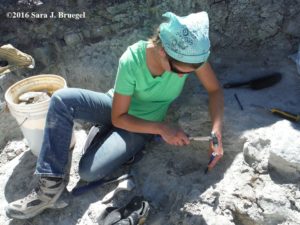
Ping, ping, ping! Thud. Thud. The high pitched clanging of hammer and chisel against hard rock mixed with the dull noises of digging picks hitting damp clay. Dark blue-gray clouds tauntingly circled the sky above, showering rain in the distance, but conveniently avoiding the ridge where our group was excavating enormous dinosaur bones. Last month, I spent several weeks in Colorado working on a paleontological dig site and learning more about dinosaur bones. The dig was in western Colorado, close to the Utah boarder – a region well known for a variety of different dinosaurs, fossils, and incredible rock formations.
The rock layers we dug in are part of the Morrison formation. These Morrison rocks are classified as part of the Jurassic rock group, which means these dinosaurs would have died during the Biblical global flood about 4500 years ago and been buried during the middle part of the flood (more about rock groups and the geologic column here). As the team excavated these dinosaur bones out of the rock, we were uncovering parts of a dinosaur bone that had not seen the light of day since that dreadful global flood. Whether it was another long rib or giant vertebrae, each discovery of a new section of bone sticking out was filled with mixed excitement and mystery.
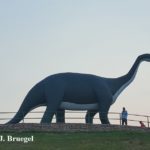
Some of the most memorable fossils were from sauropods – those enormously heavy four-footed, long-neck dinosaurs. Although the bones were not fully identified in the field (final identification and intricate preparation is done in the controlled environment of a lab), one of the fossils we excavated looked like a sauropod leg bone. Seeing this giant bone and knowing that it was just part of one of these creatures’ legs was truly something to marvel at. While visiting some other fossil museums in the region, I saw leg bones to even larger sauropods, including a humerus (front leg bone on the top, connecting to the shoulder) of a western Colorado dinosaur, originally named “Ultrasauros macintoshi”. The naming of this dinosaur was debated, and now the bone is thought to belong to a Supersaurus. These Supersaurs could weigh up to 100 tons.
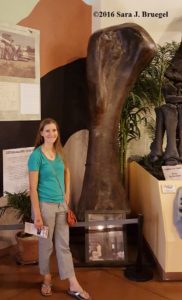
The awe-inspiring size of these dinosaurs reminds me of what the Bible has to say about Behemoth in the book of Job, chapter forty. The creature described in this passage has bones like bars of iron and a tail like a tree trunk. While some Bible commentaries say that this “Behemoth” must be an elephant or a hippo, neither of those animals have tails that look anything like a large tree trunk. Overall, this Biblical description is a much better fit for a sauropod dinosaur. Just as this passage in Job reminds us of the power, glory and sovereignty of God by describing an enormous sauropod, may you be reminded to worship our Creator when you see or think about these awe-inspiring dinosaurs.
“Look now at the behemoth, which I made along with you; he eats grass like an ox.
See now, his strength is in his hips, and his power is in his stomach muscles.
He moves his tail like a cedar; the sinews of his thighs are tightly knit.
His bones are like beams of bronze, his ribs like bars of iron.
He is the first of the ways of God; only He who made him can bring near His sword.
Surely the mountains yield food for him, and all the beasts of the field play there.
He lies under the lotus trees, in a covert of reeds and marsh.
The lotus trees cover him with their shade; the willows by the brook surround him.
Indeed the river may rage, yet he is not disturbed;
he is confident, though the Jordan gushes into his mouth . . .”
~ Job 40:15-23~
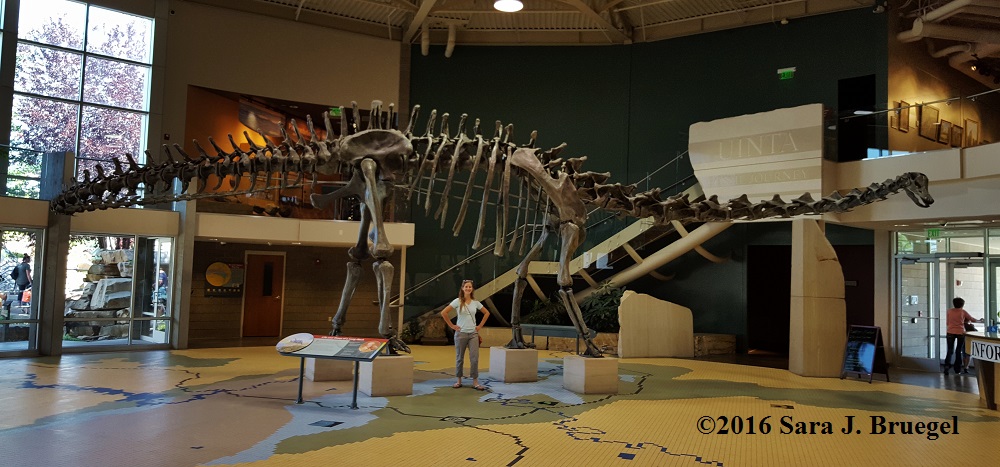
Article Copyright Sara J. Bruegel, September 2016
References:
- Harold Levin. 2010. The Earth Through Time, 9th edition. Pages 430-34. John Wiley & Sons Inc. United States.

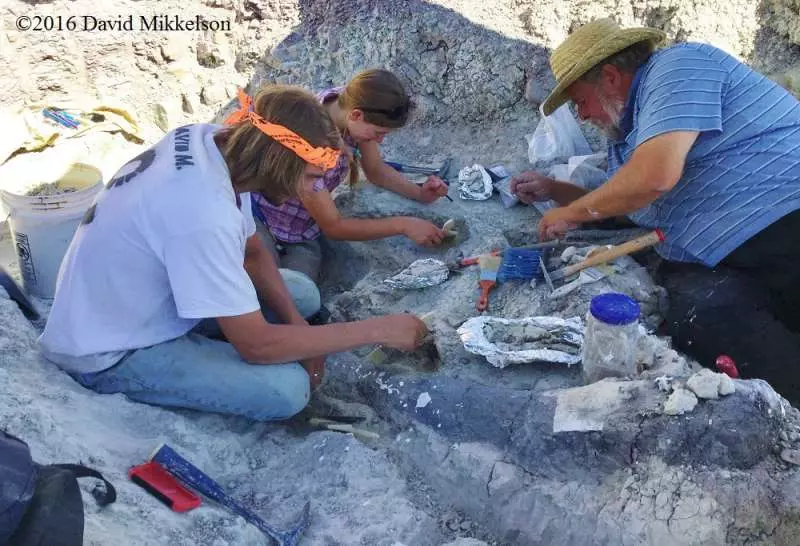




https://thecreationclub.com/behemoth-burial-ground/
“The rock layers we dug in are part of the Morrison formation. These Morrison rocks are classified as part of the Jurassic rock group, which means these dinosaurs would have died during the Biblical global flood about 4500 years ago and been buried during the middle part of the flood (more about rock groups and the geologic column here).”
I beg to differ:
***http://www.forums.bcseweb.org.uk/viewtopic.php?f=18&t=2967&start=1680 *** (my post dated 26 September – am I right or am I wrong; if I’m right then what you are claiming is pseudo-science)
I beg to differ: please re-read the Bible. It does NOT say of behemoth in Job 40 “The creature described in this passage has bones like bars of iron and a tail LIKE a [large] tree trunk.” Also dinosaurs did not still exist 4,500 or less years ago.
*** Please note: this link has not been verified as safe, virus free, etc. Follow at your own risk. Both the Creation Club and Sara Bruegel are not responsible for any kind of harm caused by this link – S.J.B.
Hello Ashley,
Yes, perhaps saying that “Behemoth” had a tail that moved like tree would have been a slightly more precise summary of the passage. The point remains that no living land animal could be said to have a tail that would meet the description in Job. Thank you & God bless!
– S.J. Bruegel